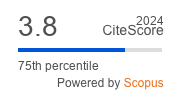Article | Open Access
Digital Participatory Model as Part of a Data-Driven Decision Support System for Urban Vibrancy
| Views: | 2547 | | | Downloads: | 2249 |
Abstract: Digital participation relies on computational systems as the instruments for expert engagement, data-driven insight, and informed decision-making. This study aims to increase expert engagement with the Bayesian-based decision support model in evaluating urban vibrancy decisions. In this study, urban vibrancy parameters are defined using “economic, use, and image value” measures. This article focuses on the visual aspect of vibrancy, defined as the image value of place. The image value is evaluated through likability and likability features. The case study area is the Eminönü Central Business District in the Istanbul Historic Peninsula due to its distinctive urban dynamics derived from the duality of being a cultural and cosmopolitan city center. This research presents a method as a decision support system (DSS) model based on the Bayesian belief network (BBN) and spatial BBN for supporting urban vibrancy decisions. The spatial BBNs monitor spatial outcomes of variables’ dependencies that form through the BBN relationship network. Spatial BBN tools monitors the spatial impact of decisions for informed urban interventions. The results demonstrate that urban greening, pedestrianization, and human-scaled streetscapes should be prioritized to make streets more likable. The most significant intervention areas are Tahtakale for signboard regulation, Sultanahmet and Vefa for cultural landscape improvement, and Vefa and Mahmutpaşa for planning building enclosures. The participation is achieved by evaluating urban vibrancy with what-if scenarios using BBN. The developed DSS model addresses which parameters should be prioritized, and what are their spatial consequences. The use of spatial BBN tools presents certain limitations in terms of interoperability and user interaction. Overall, this research contributes to participatory urban planning by incorporating both conditional and spatial dependencies. This unique approach not only promotes a more holistic understanding of urban vibrancy but also contributes to the advancement of digital participation in urban planning decisions.
Keywords: decision support; digital participation; expert participation; place value; spatial Bayesian belief network; spatial dynamics; urban vibrancy
Published:
© Gülce Kırdar, Gülen Çağdaş. This is an open access article distributed under the terms of the Creative Commons Attribution 4.0 license (http://creativecommons.org/licenses/by/4.0), which permits any use, distribution, and reproduction of the work without further permission provided the original author(s) and source are credited.


